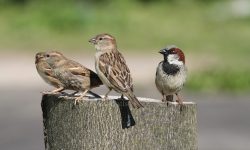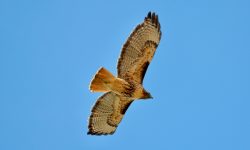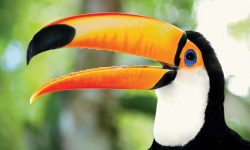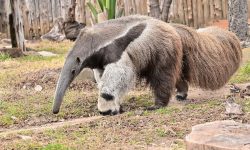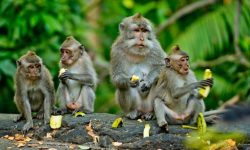The scarlet macaw (Ara macao) is one of the most iconic and dazzling birds of the tropical Americas. With brilliant plumage, remarkable intelligence, and strong family bonds, this parrot has fascinated scientists, conservationists, and bird lovers for generations. Yet behind its striking appearance lies a deeper story of survival in a world that is rapidly changing.
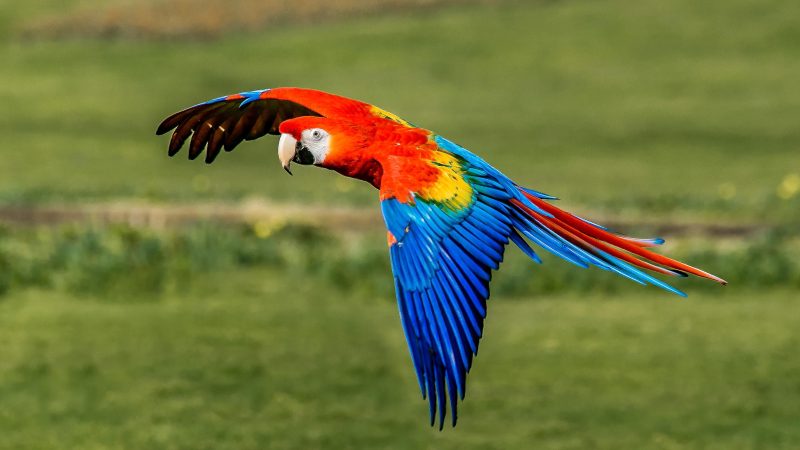
The Radiant Beauty of the Scarlet Macaw
A Spectrum of Feathers
The scarlet macaw is a masterpiece of nature’s palette—an explosion of color that stuns the eye and stirs the imagination. Its crimson body feathers glow like embers in the sunlight, deep and velvety in texture, commanding attention even in the dense green of the rainforest canopy. This fiery red seamlessly fades into a golden band of sun-bright yellow on its wings, which then melt into cool shades of cobalt and turquoise toward the wing tips and tail. The layering of these colors is so vivid and flawless that it looks almost painted, as if the bird had been dipped in primary colors.
In flight, the scarlet macaw is nothing short of spectacular. As it glides between treetops, its colors blur together in motion, creating a visual spectacle that seems almost unreal. This dazzling display serves not only to impress mates and assert territory but also to confuse would-be predators. The rapid flicker of red, yellow, and blue in the air disrupts visual focus, making it difficult for an attacker to track the bird’s precise location as it darts through the forest.
Large and Graceful
But the scarlet macaw’s allure is not just in its color—it is also in its form and motion. At approximately 81 centimeters (32 inches) in length, with more than half of that made up by its elegant tail, this bird is among the largest of all parrot species. Weighing up to 1 kilogram (2.2 pounds), it carries its size with remarkable grace. Its wings are broad and powerful, built not just for flapping through the canopy, but for long, gliding journeys over river valleys and forest expanses.
In flight, it moves with both strength and poise, often cruising above the treetops with steady, deep wingbeats. From below, its silhouette—long-tailed and outstretched—is instantly recognizable. Whether flying solo, in a pair, or among a chorus of others, the scarlet macaw commands the skies with presence and beauty that few other birds can match.
Intelligence and Social Bonds
A Brain Built for Learning
The scarlet macaw isn’t just a feast for the eyes—it’s also one of the most intelligent birds in the rainforest. With a brain wired for learning and adaptability, these parrots exhibit an impressive range of cognitive abilities. In studies and in captivity, they’ve demonstrated exceptional memory, logical reasoning, and tool-use behavior. They can solve puzzles, adapt to new challenges, and even learn cause-and-effect relationships—a sign of advanced thinking rarely found outside primates.
Perhaps most remarkable is their talent for mimicry. In human care, scarlet macaws have been known to reproduce words, laughter, mechanical sounds, and even emotional tones with uncanny precision. But in the wild, their vocalizations take on a more vital role. A single flock can produce a symphony of calls—high-pitched screeches, throaty croaks, and rhythmic squawks—each carrying nuanced meanings related to alarm, location, courtship, or coordination in flight. These vocal skills are key to survival in a dense and competitive ecosystem.
Family for Life
Scarlet macaws are deeply social creatures, and nowhere is this more evident than in their lifelong pair bonds. Once a male and female choose each other, they remain together through thick and thin, forming one of nature’s most loyal partnerships. These bonded pairs do nearly everything together: they groom one another’s feathers to reinforce trust, forage side by side, and fly in perfect synchronicity above the treetops.
During the breeding season, the bond becomes even more critical. The couple selects a secure tree cavity—often high up in an old-growth tree—as their nesting site. Inside, the female lays one or two eggs. Both parents share the responsibilities of incubating, guarding, and later feeding the chicks. The young macaws remain with their parents for many months, absorbing survival skills and social behaviors until they’re ready to fly out on their own. The care they receive during this early period lays the foundation for the intelligence and independence they’ll need as adults.
Group Dynamics
While scarlet macaws are most commonly seen flying in pairs, their social life extends far beyond just their mate. They are known to form tight-knit family units and, in regions with abundant food or clay licks, may join larger flocks of 10 to 30 individuals. These gatherings are not random; they function as communal forums where birds exchange vocalizations, reinforce social bonds, and learn from one another.
The flock provides more than companionship—it serves as a protective network. Many eyes scanning for danger means early warnings of approaching predators. Their group coordination, especially in flight, is remarkable. Macaws will often wheel through the air in unison, an aerial display that both dazzles and defends.
Living in a complex social system filled with communication, cooperation, and competition has helped shape the scarlet macaw into a bird of great mental depth and emotional range. It’s no wonder they are considered not only among the most beautiful birds in the world, but also among the most intelligent.
The Scarlet Macaw’s Diet and Habitat
What They Eat
A scarlet macaw’s diet is as vibrant as its plumage, rich in diversity and intricately tied to the ecology of the rainforest. These birds are primarily frugivores, feasting on a wide variety of tropical fruits, seeds, nuts, and flower petals found high in the canopy. Their strong, curved beaks are perfectly adapted for cracking open the hardest of seed shells—unlocking energy-rich kernels that few other animals can access.
But the scarlet macaw’s palate is not limited to sweet, ripe fruits. In fact, they are among the few animals known to regularly consume unripe or toxic fruits that would be harmful to most other species. These fruits often contain alkaloids or tannins, which can cause digestive distress or even poisoning. So how do macaws manage it?
The answer lies in one of the most fascinating behaviors observed in tropical birds: geophagy, or clay eating. Scarlet macaws frequent exposed riverbanks known as clay licks, where they gather in large, noisy flocks to consume mineral-rich clay. This clay binds with the toxins from the unripe fruits and neutralizes them in the digestive system, allowing the macaws to safely access food sources others must avoid. It’s a remarkable evolutionary adaptation—one that gives these birds a crucial survival edge in a competitive ecosystem.
Where They Live
Scarlet macaws are native to the lush, lowland rainforests of Central and South America, where towering trees, abundant rainfall, and warm temperatures provide the ideal backdrop for their colorful lives. Their range spans from the southern edges of Mexico through Belize, Honduras, Nicaragua, Costa Rica, and Panama, and extends deep into the Amazon Basin across countries like Peru, Colombia, Ecuador, Bolivia, and Brazil.
These birds thrive in primary, undisturbed rainforests, where ancient trees provide essential nesting cavities and dense canopies offer both food and protection. Yet, they’re also surprisingly adaptable and can be found in semi-open woodlands, gallery forests, and riverine corridors, especially where fruiting trees are abundant. Their dependence on old-growth trees for nesting, however, means that deforestation and habitat fragmentation pose serious threats to their long-term survival.
Scarlet macaws are not just inhabitants of these forests—they are essential participants in them. As they feed, they play a vital role in seed dispersal, helping to regenerate and shape the very environment they depend on. Their movement patterns—traveling long distances in search of food—ensure genetic diversity among plant species, strengthening the forest’s ecological resilience.
Threats and Conservation
Habitat Loss and Illegal Trade
Beneath the vibrant colors and powerful calls of the scarlet macaw lies a troubling reality: this iconic bird is under threat. Once common across vast swaths of tropical forest, scarlet macaws are now disappearing from many parts of their historic range—victims of habitat destruction and human exploitation.
The leading threat is deforestation. Across Central and South America, rainforests are being cleared at an alarming pace to make way for agriculture, cattle ranching, mining, and expanding human settlements. As ancient trees fall, they take with them the very nesting sites these macaws depend on—hollow trunks high above the forest floor, often centuries old. Without these secure cavities, breeding becomes impossible, and populations begin to unravel.
At the same time, illegal wildlife trafficking casts a long shadow over scarlet macaw populations. Their stunning beauty and intelligence make them a high-value target in the exotic pet trade. Poachers often climb towering trees to raid nests for chicks, a dangerous and cruel process that can lead to injury or death for both young birds and fiercely protective parents. The loss of even a few individuals can destabilize the delicate social structure of macaw groups and erode genetic diversity critical to long-term survival.
Protection Under CITES
Recognizing the escalating threats, the scarlet macaw has been granted the highest level of international protection. It is listed under Appendix I of the Convention on International Trade in Endangered Species of Wild Fauna and Flora (CITES). This designation bans all international commercial trade in wild-caught individuals and places strict regulations on the movement of captive-bred birds.
The impact of CITES has been significant. By restricting cross-border trade and increasing legal scrutiny, the treaty has made it more difficult for traffickers to operate unchecked. Just as importantly, it has galvanized public awareness, highlighting the global responsibility to protect the scarlet macaw and the tropical ecosystems it symbolizes.
However, legal protection alone is not enough. It must be paired with habitat preservation, local engagement, and sustainable enforcement to ensure real progress.
Conservation Success Stories
Amid the challenges, there are sparks of hope. In countries like Costa Rica and Honduras, dedicated conservation programs have begun to reverse local declines. Captive-bred scarlet macaws are being successfully reintroduced into protected areas—places where hunting is prohibited and old-growth trees are left standing. These birds are not simply released into the wild; they are monitored, supported, and—most importantly—embraced by local communities.
In these regions, scarlet macaws have become more than wildlife—they are symbols of national pride and eco-tourism potential. Children grow up learning about them in schools, farmers help track their movements, and tourists come from around the world to glimpse their fiery wings slicing through the rainforest sky.
These success stories underscore a powerful truth: conservation works when people are part of the solution. With enough will, resources, and education, it is possible to protect not just the scarlet macaw, but the entire web of life that surrounds it.
Why the Scarlet Macaw Matters
The scarlet macaw is far more than a feathered spectacle gliding through the treetops—it is a living thread in the intricate fabric of the rainforest. As a keystone species, its role extends well beyond its own survival. With every fruit it consumes and every seed it drops during flight, the macaw helps shape the forest’s future. It is a gardener of the canopy, dispersing life from tree to tree, ensuring that biodiversity takes root and thrives.
Its presence in a forest signals more than beauty—it signals ecological integrity. A healthy population of scarlet macaws suggests that old-growth trees still stand, food sources remain plentiful, and the chain of life remains unbroken. In contrast, their absence is often the first whisper of a forest in decline.
Culturally, the scarlet macaw holds deep significance. To many Indigenous communities, it represents the spirit of the jungle, a messenger between the natural and spiritual worlds. Its radiant colors echo in ancient art, its cries woven into myth and memory. Even today, it inspires wonder in travelers, scientists, and children alike—a global ambassador for the wild heart of the tropics.
To protect the scarlet macaw is to protect everything it touches: the trees it nests in, the fruits it eats, the soil it nourishes, and the countless other species that share its world. Saving this one magnificent bird means preserving the living rhythm of the rainforest itself—a rhythm the planet cannot afford to lose.
Final Thoughts
The scarlet macaw is not just a bird—it is a living emblem of the rainforest’s brilliance and fragility. Its vivid plumage, complex mind, and powerful voice embody the richness of life that still pulses through the world’s tropical forests. Watching one soar across the canopy is like witnessing a fragment of wild, ancient beauty that refuses to fade.
Yet beauty alone does not guarantee survival. As forests fall and the illegal wildlife trade persists, the scarlet macaw’s future hangs in the balance. What remains clear is this: its fate is not sealed, but shaped by the choices we make today. International protections like CITES lay a foundation, but it is the grassroots efforts—local guardians, forest stewards, educators, and everyday people—that breathe real hope into conservation.
If we can protect the scarlet macaw, we protect something far greater: the living, breathing soul of the rainforest. And in doing so, we ensure that generations to come will not just read about this bird in books, but look up into the jungle sky and see it—red wings flashing, voice ringing, wild and free.


